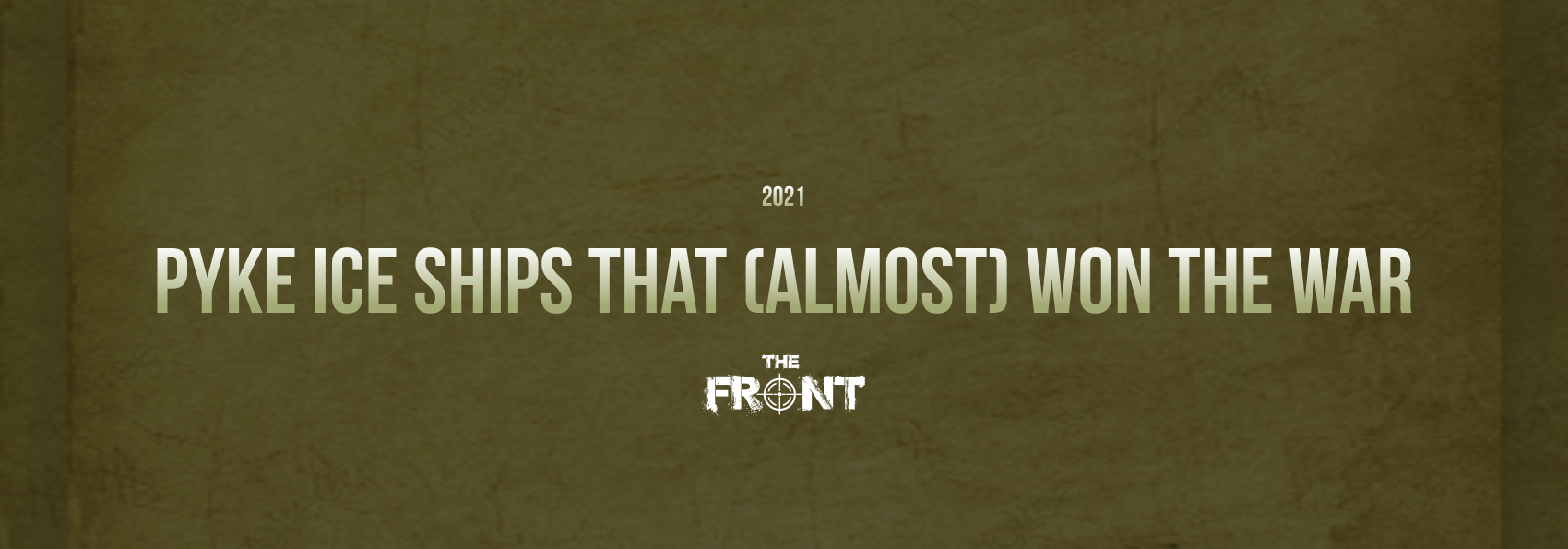When a government is at war, they’ve got to pull out all the stops. And sometimes, that means listening to ideas that would ordinarily seem totally insane. Or, in the case of Lord Mountbatten during the Second World War, an actual mad scientist. This is how gigantic Pyke aircraft carriers made of ice won the Battle of the Atlantic almost.
/https://public-media.si-cdn.com/filer/33/ce/33ce2654-cd75-450e-9cab-11862a36c150/habakkuk-ice-aircraft-carrier-2.jpg)
Wait, what?
Until mid-1943, the Allies were losing the Battle of the Atlantic. Part of this was due to the Mid-Atlantic Gap—a 500-mile wide slice of the ocean outside the range of bombers based in Britain and the US mainland. The Mid-Atlantic Gap was the German U-boats’ playground and became known as the ‘Black Pit’ for the hundreds of merchant ships that disappeared there. Before 1943, 1,015 merchantmen went down to U-boats stalking the Black Pit, and every ship lost was a serious blow to the Allied war effort.
But the boffins on both sides of the pond had a solution: planes. Convoys with their own air cover were far more likely to make it across the Atlantic and got the chance to knock out U-boats along the way, making the seas safer. Definitely a win-win. But planes need carriers, and to make carriers, you need steel. A LOT of steel. Just about everything else a country needs to fight a war also needs a lot of steel, so it was in short supply everywhere.
Genius or Madman?
This is where the genius, spy, inventor, and mad scientist Geoffrey Pyke steps in. His solution to the Black Pit was simple: build aircraft carriers out of ice.
But not just any ice, Pyke had spent early 1942 with ice-expert Max Perutz designing a composite material much stronger than frozen water. Named ‘pykrete’ after its inventor, the material was a mixture of water and wood pulp that could be machined like wood and cast like metal. Pykrete was also far stronger than regular ice, floated better, and took longer to melt. If you had to build an aircraft carrier from ice, pykrete was the best ice for it.
With pykrete under production in Canada, Pyke set to work designing his carriers.
The Demonstration
In 1943, he updated his patron, Chief of Combined Operations Lord Mountbatten (who firmly believed Pyke was a genius who would win Britain the war), on the project, now named Habakkuk. His lordship was impressed and insisted on demonstrating Pyke’s pykrete to the admirals and generals present for the Quebec Conference.
Famously, Mountbatten had two blocks, one of pykrete and the other ice, placed next to each other in the meeting room. He then warned the top brass about the possibility of splinters. The generals looked on in confusion. Mountbatten then drew his pistol and shot the ice block, which shattered. He then fired into the pykrete block. The bullet ricocheted off and embedded itself in a wall, narrowly missing a general. Probably worried about what the next test might involve, the commanders threw their support behind the project, but that’s when things started to go wrong.

If It Weren’t For Those Meddling Generals…
The admiralty decided that Pyke’s ice carriers were the solution to all their problems and started imposing restrictions on the design. Firstly, they wanted the ships to have a range of 11,000km. This was further than a Town-class light cruiser. Secondly, they wanted it to be torpedo-proof, necessitating a hull 40-feet thick.
The Fleet Air Arm then piled on even more restrictions. They wanted the ships to accommodate heavy bombers, meaning the runway needed to be at least 2,000-feet long. Pyke’s ultimate design grew so large that structural issues appeared. With so much weight above it (planes, fuel stores, bombs, plus steel reinforcement), the pykrete in the ship’s hull would deform. The only solution to this was to install a massive refrigeration unit at the centre of the vessel. But this required an equally massive powerplant that had to be outside the hull due to heat output. With so many vital parts unprotected, the pykrete ships needed a battery of 40 4½-inch turrets for air defence. The monster ship would have displaced over 2.2 million tonnes!
The End
But it was not to be. As Pyke built his prototype in Canada, large numbers of long-range B-24 liberators and liberty-class escort carriers were becoming available. They closed the Mid-Atlantic Gap and began sinking U-boats in droves. Designed to fill a niche now nonexistent, Operation Habakkuk was sadly abandoned. Pyke’s great ice carriers never made it to sea.
